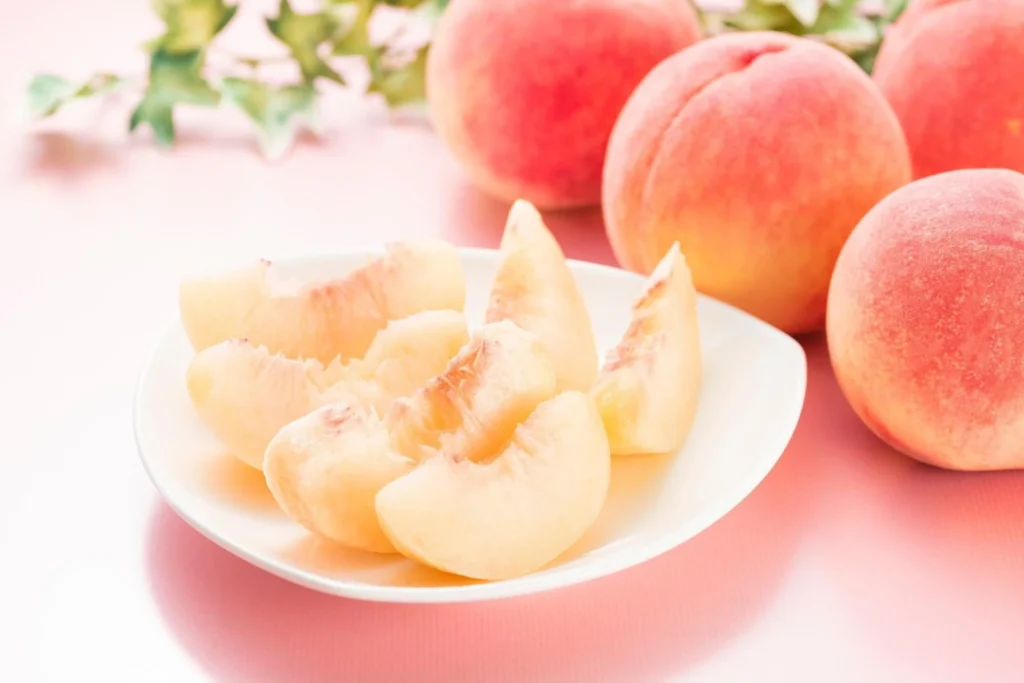Why Japanese Peaches Are the Sweetest Fruit You'll Ever Taste

Japanese peaches, or "Momo" in Japanese, are celebrated worldwide for their unparalleled sweetness, delicate texture, and cultural significance. Unlike their Western counterparts, these peaches are often larger, softer, and so juicy that they require careful handling. Their reputation has made them a symbol of luxury, often gifted in Japan as tokens of appreciation, goodwill, or during special occasions like the Obon festival.
From their pale, velvety skin to their fragrant aroma, Japanese peaches have captivated food enthusiasts and cultural explorers alike. Their allure goes beyond flavor; it’s about the meticulous care that growers invest in producing these exquisite fruits, the rich history that surrounds them, and the traditions that have been passed down for generations.
- The History and Cultural Significance of Japanese Peaches
- Varieties of Japanese Peaches: What Makes Them Unique?
- The Art of Growing Japanese Peaches: Perfection in Every Bite
- Seasonality and Where to Buy Japanese Peaches
- How to Enjoy Japanese Peaches: Recipes and Traditions
- FAQs About Japanese Peaches
The History and Cultural Significance of Japanese Peaches
The peach holds a deep-rooted place in Japanese culture, appearing in folklore and traditional art. In the famous tale of Momotaro, a peach becomes the vessel carrying a heroic child to earth. This association with purity, good fortune, and protection has cemented peaches as an iconic symbol in Japan.
Historically, peaches were first cultivated in Japan around the Yayoi period, likely introduced from China. Over centuries, selective breeding and local cultivation techniques evolved to produce the distinct peaches we see today. The fruit became a luxurious delicacy, often featured in the imperial court’s cuisine.
Even today, peaches play an essential role in Japanese celebrations and seasonal rituals. During the peach blossom season in March, the Hina Matsuri (Doll Festival) celebrates the fruit's symbolism of health and prosperity for young girls, showcasing its enduring cultural resonance.
Varieties of Japanese Peaches: What Makes Them Unique?
Japanese peaches are renowned for their diversity, with varieties that cater to a wide range of preferences. The most famous is the Hakuto peach, prized for its creamy white flesh and melt-in-your-mouth texture, often sold at premium prices ranging from $30 to $50 per piece. Another standout is the Shimizu White Peach, which boasts a perfect balance of sweetness and acidity, typically costing around $25 to $40 per peach.
Other regional varieties include:
- Yamanashi Peaches: Known for their exceptional juiciness and grown in the Yamanashi Prefecture, these peaches are often sold in carefully packaged sets priced at $80 to $120 for 6 pieces.
- Hakuho Peaches: Slightly firmer with a blush of pink, these peaches are more moderately priced at around $15 to $25 each, making them an excellent option for those trying Japanese peaches for the first time.
What sets Japanese peaches apart is the attention to detail during cultivation. Each peach is often hand-wrapped to protect it from blemishes, and growers adjust sunlight exposure to ensure a uniform color. This care is why these peaches are considered the epitome of agricultural craftsmanship.
The Art of Growing Japanese Peaches: Perfection in Every Bite
Cultivating Japanese peaches is as much an art as a science. The process begins with careful pruning and thinning to ensure that each tree directs its nutrients to a select number of peaches. Growers monitor temperature, humidity, and even the amount of sunlight each peach receives.
One unique practice is the use of individual protective bags around each peach. This not only shields the fruit from pests and harsh weather but also enhances its appearance, preventing blemishes and ensuring the smooth, velvety finish that Japanese peaches are known for.
Harvesting is another meticulous step. Each peach is hand-picked at the peak of ripeness, ensuring optimal flavor and texture. Farmers often transport the peaches in padded containers to prevent bruising, reflecting their commitment to delivering perfection.
Seasonality and Where to Buy Japanese Peaches
Japanese peaches are a seasonal delight, typically available during the summer months, from late June to early September. The peak harvest period falls in July, when markets across Japan overflow with these luxurious fruits.
For those outside Japan, accessing authentic Japanese peaches can be a challenge, but specialty stores and online retailers now make it possible. High-quality options like the Hakuto peach or Shimizu White Peach are often available on platforms such as JapaneseTaste.com, where prices can range from $100 to $150 per box of 3-6 peaches, depending on the season and variety.
How to Enjoy Japanese Peaches: Recipes and Traditions
While Japanese peaches are best enjoyed fresh, their versatility in cooking should not be overlooked. Here are some popular ways to savor this fruit:
- Fresh and Raw: Served chilled, often with a light sprinkling of sugar or paired with sake.
- Peach Parfaits: Layered with whipped cream, jelly, and sponge cake, this dessert highlights the peach's natural sweetness.
- Preserves and Jams: Perfect for extending the peach season, capturing its essence for months.
- Savory Pairings: Used in salads with prosciutto or grilled and served alongside fish, peaches add a unique twist to savory dishes.
In Japanese tea ceremonies, peaches are sometimes incorporated into seasonal sweets (wagashi), showcasing their delicate flavor and symbolic value.
FAQs About Japanese Peaches
If you want to discover other articles similar to Why Japanese Peaches Are the Sweetest Fruit You'll Ever Taste, you can visit the Food & Drink category.
Leave a Reply
More Related Posts